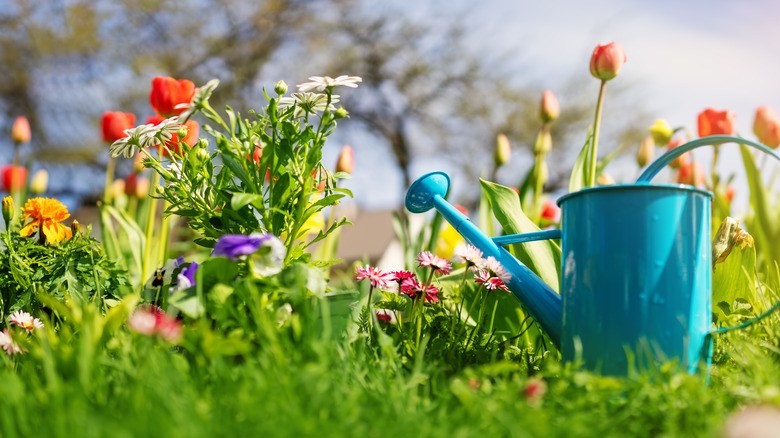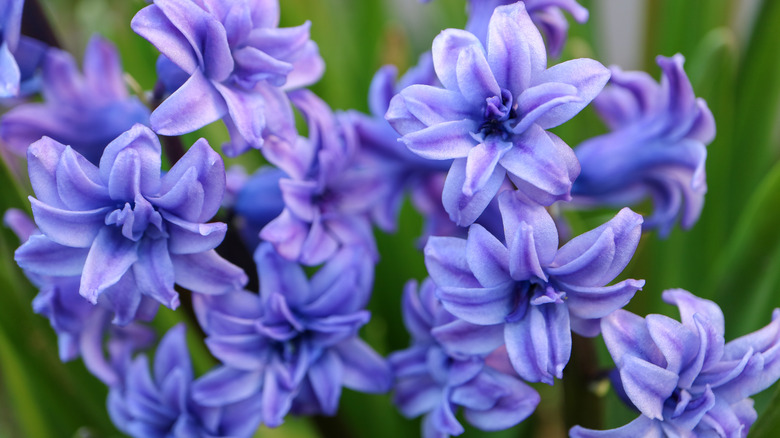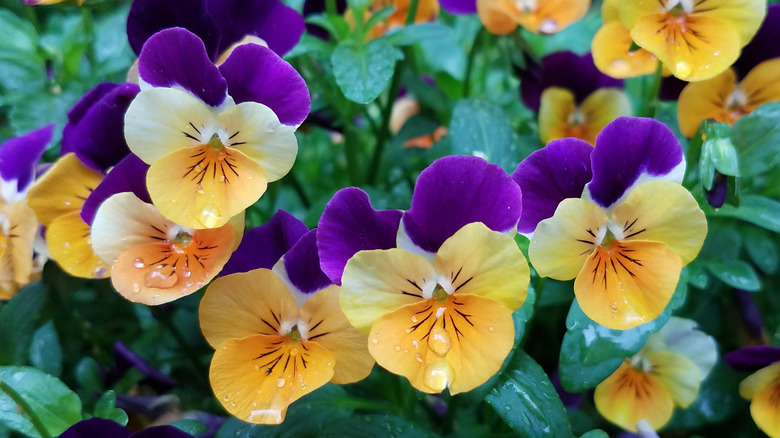The One Color You Should Avoid Using In Your Garden
Springtime brings the flowers, and flowers bring the pollinators. If this is the case, then why do some gardens tend to fare better than others? The secret to getting the pollinator party started is simple: color balance and variety. You want your garden to shine like a technicolor rainbow beacon, alerting all bees, birds, and butterflies that the springtime buffet is on. That means your flowers shouldn't be all the same color, or a majority of the same, and especially not nestled next to a kindred color. When it comes to arranging your garden, keep it as chaotically colored as possible. Keep it natural.
According to the Lady Bird Johnson Wildflower Center, pink flowers are one of the most common colors you'll find when sourcing out fragrant foliage, followed by white, yellow, blue, and red. Which one of these seems like the worst option for a garden? They all seem so bright and cheery, don't they? Remember that each color can have a different hue or shade, and our regal renegade falls into the blue and-or red category.
That color is purple, and as beautiful a color as it is, it's not a great idea to overwhelm your outdoor space with this pigment. While the three B's (birds, butterflies, and bees) actually gravitate to this color, if your space is overwhelmingly violet, then you risk not serving up your flora feast to the multitudes of other different critters that benefit the ecosystem. There's that, and purple's a bit of an emotional color, don't you agree?
It's a natural rarity
Though you might not think it, purple is actually a rather rare color to find in the natural world, as noted by the Natural History Museum. It's bright, bold, absolutely gorgeous, and is often associated with animals that can kill you. (But that's not the reason why this regal color shouldn't belong in your garden.)
If you think about what the color purple symbolizes, it's typically associated with magic, mysticism, fame, wealth, and royalty. This is because purple dye was incredibly difficult to make back in the 16th century BCE (via the University of Michigan). Only the richest and most powerful individuals could afford it. In some cultures, though, purple takes on a more dark and sinister motif. In Thailand, Latin and South America, and some parts of Europe, purple actually symbolizes death, per K International.
Too much purple adds a somber feeling to your garden and can make it feel a bit dark. So while it goes without saying that a little bit of purple is fine, don't go reenacting a Tim Burton film by filling your garden with moody-hued flowers. That might be fine for some people, but it doesn't really scream out "spring has sprung," now does it?
Boost the contrast
Having a little bit of purple isn't a bad thing. In fact, the University of Illinois notes that besides red, orange, yellow, and pink, purple is one of the big five colors that are attractive to beneficial pollinators. If you already have more purple-hued flowers in your garden, or are pondering over adding a few extras, just remember that the saying "too much of a good thing" came about for a reason. Also, take into account that complementary colors are always a good option. To figure out what types of flora might mesh well with your purple posies and violaceous violets, try utilizing a simple art tool: the color wheel. Color wheels, like this one from Canva, can help you pinpoint colors that will help you arrange your flowers in a more synchronistic (yet spontaneous) way.
Some of the best colors you can use with purple are bright green, yellow, and even silver. If you're questioning silver, just think of lavender plants. Their flowers are bright purple, but the rest of the plant has a shimmery gray-silver sheen to it. According to Costa Farms, artemisia is a neutral silver plant that looks great with everything. (It's like the little black dress of the gardening world.) Or choose sunshine-inspired yellow flowers like evening primrose, sunflowers, and fennel, which also brings in that striking bright green contrast.


